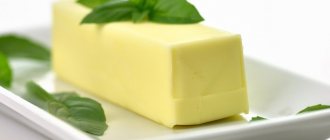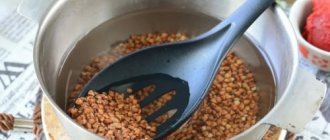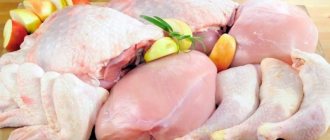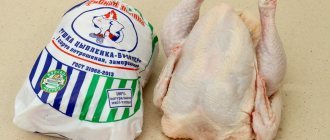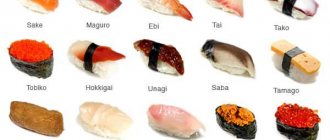Unfortunately, city apartments are not adapted for storing significant volumes of fresh vegetables. Nevertheless, many are trying to stock up on supplies before the long winter. One of the most popular products is onions. As a rule, three common mistakes are made regarding its storage.
- Damp room. These are ideal conditions for the growth of bacteria and fungi and subsequent rotting.
- Using plastic bags. Or plastic containers. In such a package, the onions literally suffocate.
- Damage to the containment. During harvesting or sorting vegetables, they are often subject to blows, punctures, and cuts. Bacteria get inside damaged fruits, which provokes the process of rotting.
Is it allowed and how much?
Onions in the kitchen can be at room temperature and low humidity , but such conditions are favorable for germination.
The temperature in the refrigerator is on average from +1°C to +3°C. This is the optimal indicator for storage, allowing you to keep onions without sprouting, and even keep them in a peeled state.
But there are also some disadvantages to using a refrigerator as a storage area for vegetables:
- short shelf life;
- it will not be possible to place large volumes;
- If storage is carried out without packaging, then the specific smell will permeate all the products.
In the vegetable compartment, onions are best preserved wrapped in a bag or placed in a plastic container.
The need to put onions in the refrigerator may arise when, after preparing a dish, there is excess product left, in some cases even already peeled and chopped.
If you properly package and store whole onions, they can last 30-60 days in the refrigerator.
You will find a lot of useful and important information about storing onions here.
Which onion varieties store longer and better?
Onion varieties differ not only in color and taste, but also in their ability to retain their taste. It has been noticed that, compared to white and red varieties, yellow onions last longer. It is less capricious when grown in the garden, it has a denser outer layer-by-layer peel, it is more pungent, as it contains more antimicrobial substances.
On a note! Of the yellow varieties of onions, those with a higher content of essential oils and capsaicin, which is responsible for the pungency of onions, are better suited for long-term storage. But semi-sharp and salad varieties are stored worse.
Of course, color does not affect the shelf life of root vegetables.
The fact is that the selection of white and red varieties was carried out to improve taste, even to the detriment of other characteristics, such as shelf life and resistance to putrefactive bacteria. They also say that onions grown from onions planted in beds are stored better than those sown with seeds. Perhaps the reason for this is that sets have more time to fully ripen than seeds. In addition, unlike seeds, seedlings are not driven out of the ground with the help of an additional dose of fertilizers, which have a bad effect on the keeping quality of root crops. However, there are no confirmed observations that the shelf life of onions grown in different ways is very different.
Varieties of onions for long-term storage
When breeding some yellow varieties, breeders tried to enhance their ability for long-term storage. The most popular onion varieties suitable for long-term storage:
- “Stuttgarten Riesen”, “Centurion”, “Sturon” are German varieties that are well resistant to putrefactive bacteria, especially powdery mildew. It has been noted that their necks dry out quickly, preventing microbes and fungi from getting inside the bulb.
- "Orion" is an English variety, well protected by a dense peel and able to resist bacterial and fungal infections.
- “Arzamas” - the burning taste indicates the ability to fight microbiological aggression. The small, round fruits store well under the right conditions.
- “Bessonovsky” - the bulbs contain a significant content of dry matter, which is important for long-term storage.
- “Texas Yellow” - Dutch breeders developed this variety, selecting on the principle of greatest resistance to putrefactive lesions, thereby increasing its shelf life.
- "Red Baron" - among the popular red varieties, is recognized as the most suitable for preserving in winter.
Texas yellow onion
It should be borne in mind that varietal qualities are much less important for preservation than preparation and storage conditions.
Preparing to store onions
Onions can be stored in the refrigerator in several ways, taking into account the condition of the product, its type and the volume occupied. Vegetables that were collected on time and dried well are preserved better than others.
During the harvesting process, the roots should not be damaged, nor the bulbs themselves. It is most convenient to dry the onions in the open air, avoiding exposure to sunlight. Another option is to tie it and hang it in bunches.
After drying, the vegetable should be completely dry, including the top . Otherwise, the vegetable will not be able to be stored for long.
Immediately before storing, the entire volume of vegetables is sorted out, discarding damaged ones. Dried tops and roots are trimmed.
Read about storing onions in a cellar or basement here, at home in winter - here.
Possible causes of onion spoilage during storage, preventive measures
Spoilage of onions during storage usually implies rotting. The reasons may be different:
- disease - most often it is a fungal or bacterial infection, the symptoms of which appear during storage;
- increased humidity in the room;
- improper packaging - tightly closed containers, use of polyethylene;
- abuse of nitrogen-containing fertilizers - this brings the harvest time closer, but has a negative effect on the duration of its storage.
The following measures will help avoid damage to the crop during storage:
- processing of planting material in spring - it is optimal to use a solution of potassium permanganate;
- moderate use of fertilizers, proper potassium fertilizing - they increase the shelf life of the crop;
- care when harvesting - infection often occurs due to mechanical damage;
- careful screening and elimination of damaged specimens;
- complete drying of the crop;
- preparing the premises for storing the crop - completely drying it, disinfecting it;
- ensuring good ventilation;
- maintaining the recommended temperature and humidity levels;
- use of breathable storage containers;
- periodic inspection of stored crops with rejection of damaged specimens.
You can learn about the features of storing onions from the following video:
Compliance with all the rules for storing onions will allow you to keep them in good condition for as long as possible. This can be done both in an apartment and in the presence of a basement or cellar. It is especially important to preserve the harvest if part of it is intended for planting next year.
0
0
Copy link
All possible options
The duration of its storage in the refrigerator and the necessary packaging largely depend on the form in which the onions are sent for storage.
Crude
Unpeeled prepared onions can be placed in the vegetable compartment in the refrigerator. An egg container is suitable as a container . Each bulb will be located separately in it.
Another option is paper bags. They should not be tightly closed to prevent condensation from forming inside. Under such conditions, storage duration can be up to 2 months.
Purified
If there are already peeled onions left after cooking, you can store them in the refrigerator. For this:
- The vegetable is washed.
- Place in a glass jar or plastic container.
- Add cold water.
- Change the water every couple of days.
The maximum storage period under such conditions is up to 20 days. More information about ways to store peeled onions can be found here.
Cut
Peeled and chopped onions are more difficult to preserve than whole ones. There are several ways to cope with the problem.
If half or a segment is cut off from the bulb, then the following options will help:
- The cut is greased with sunflower oil and placed on this side in a container. It is better to cover the top with a lid. Without a lid, the storage time is a day, with a lid – several days.
- The remaining part of the onion is wrapped in film. The product can be stored in this form for no more than 4-5 days.
- A layer of salt is poured into the container. Place the onion on it, cut side down. Storage - no more than a week.
Finely chopped onions are not stored for long - up to 12 hours in a container. It is best to use it for food or process it for long-term storage - freeze, dry, etc.
Fried
Fried vegetables can be stored for a long time only in one case - when they are frozen :
- The vegetable is cut.
- Fry in vegetable oil.
- Cool.
- Place in containers or plastic bags.
- Place in the freezer.
When using such a preparation, you don’t have to defrost it in advance, but immediately add it to the dish you are preparing, for example, soup.
Marinated
Pickled onions are an original addition to salads, cooked potatoes, pork and other dishes.
Due to its versatility, pickling onions is a good way not only to preserve vegetables, but also to make a very tasty preparation for many dishes. It can be used gradually as needed.
Procedure:
- Wash and peel the onions (3 pcs.).
Cut into half rings.- Mix the ingredients for the marinade in a bowl (sugar - 3 tbsp, salt - ½ tbsp, vinegar - 7 tbsp, boiled water - 0.25 l).
- Stir the marinade until the salt and sugar are completely dissolved.
- Place onions in a glass jar.
- Pour over the marinade.
- Place in the refrigerator.
After just ½ hour the product can be ready for use. Lightly frying it before serving will add additional originality to the dish. The pickled product can be stored for up to six months.
This video will show you how to pickle onions for the winter:
Basic Rules
How to store onions at home in an apartment? Rules:
- For long-term storage, only uninfected, ripe onions without mechanical damage are suitable. It should have thin necks and strong scales (an unripe one will rot, there is a high probability of being infected with diseases, and an overripe one can take root again, losing dry scales).
- dried before storage .
- When trimming, at least 4 centimeters of the neck .
- A prerequisite is the breathability of the container.
- to sort out the onions twice or three times , remove rotten bulbs, and if they are damp, dry them again.
- Excessive air humidity negatively affects the condition of stored vegetables. This should be taken into account when choosing a place for onions in the apartment.
Please note: you can solve a problem such as onion sprouting using lime paste .
The root lobes of the bulbs are coated with it after cutting the roots.
Another way is burning the roots . The downside of both onion treatments is that after them it cannot be used as planting material.
How to store onions at home?
You can learn how to remove and dry onions for storage at home from the video:
Rules for freezing vegetables
Vegetables can be frozen in various ways:
- entirely;
- sliced;
- already cooked.
The best option is to cut the vegetable in advance before freezing. This will allow:
- ensure compact storage;
- defrost in the future as much product as needed at one time.
It is convenient when frozen vegetables are packaged in portions. This will allow you to easily separate as much product as needed without using force or breaking off the solid caked frozen piece.
Procedure:
- Wash and peel the onion.
- Chop finely.
- Place immediately into small containers, or, alternatively, freeze in one layer in a wide flat container, and then pour into a bag or container.
A properly frozen vegetable can be stored in the freezer until the next harvest. During storage, a significant part of the nutrients is retained.
The main requirement is not to re-freeze the thawed onion . And do not allow even partial defrosting of the workpiece, which must lie for a long time.
How to freeze onions for the winter, video recipe:
Types of onions
Several types of onions are used in cooking. Basic:
- Bulb onions
- shallot
- Leek
- Batun
- Schnitt
- Slime
From these species, onions and shallots form bulbs that are eaten. Shallot has the popular names kushchevka (Ukraine), family (Russia, Moldova). Therefore they have similar properties. Shallots can be stored longer without sprouting. It can withstand lower temperatures more easily.
In other species, leaves (feathers) are more often used. They grow in bushes. Schnitt and slime are often used as ornamental plants. Many gardeners do not even know that the leaves of these flowers can be eaten.
Leeks are more similar in appearance to garlic; they have large, flat leaves folded along the vein.
Onions contain vitamins B, C, E. minerals sodium, magnesium, potassium, calcium, phosphorus, iron, zinc, fluorine, manganese. 100 g of onion contains 88 g of water, 11 g of carbohydrates, proteins, pectins, folic acid, antioxidants. Calorie content of 100 g of onion is 43 kcal.
Onions are used raw as a seasoning for vegetables and added to first and second courses. Onions do not lose their taste and energy values during heat treatment. Therefore, it is fried along with other vegetables, meat, fish, and mushrooms.
Storing green onions
Green onions are more difficult to preserve than onions. Greens are more demanding on maintenance conditions and can quickly disappear.
in the refrigerator :
- in kraft paper – up to 3 weeks;
- in a cellophane bag – up to 1.5 months;
- in glass containers – no more than a month;
- with a damp cloth in cellophane - up to a month.
When sending green onions for storage, you must ensure that the leaves do not wrinkle or bend, as this will accelerate wilting.
You can learn about storing green onions in the refrigerator here, and ways to preserve them for the winter here.
Selection and preparation
Preparing bulbs for winter storage begins at the harvest stage. When to harvest onions? Harvesting is carried out 3-4 months after planting, usually from the beginning of August to the end of September (depending on the region). At this point, the onion is ripening and filled with juice. Maturation is indicated by thinning of the neck, yellowing and drying of the feathers .
Harvesting should be done in dry weather . This will reduce the risk of onions rotting during storage. When pulling out the onion, be extremely careful. Do not pull or pull it too hard to avoid damaging the roots and tearing off the feathers. If the onion is firmly stuck in the ground, first dig it up and only then pull it out .
the collected bulbs or hit them on the ground to remove soil or sand. This will avoid damage to the heads and significantly extend its shelf life.
Onions must be harvested in dry weather 90-120 days after planting. This will preserve the product, avoid its spoilage, rotting and germination.
After harvesting, the onions must be thoroughly dried . This stage is especially important if it’s a rainy summer. High-quality drying will ensure the preservation of onions until spring.
There are several ways to dry products:
- spread the onions on a wooden surface and leave them in the fresh air. If it rains frequently or there is high humidity outside, lay the product on the floor or shelves on the veranda or balcony;
- tie the bulbs into a bunch and hang them under a canopy. Minimal contact with different surfaces and moisture guarantees good drying of the product;
- An oven will help dry the bulbs in your apartment. Preheat the oven to minimum temperature, place the onions on the grill and leave for a couple of hours. Make sure that it does not dry out and that the top peel does not crack.
The air drying period for onions is 1-2 weeks. The drying of the bulbs is determined by the condition of the surface scales: they should be smooth, shiny and easily separated.
After drying, trim dry leaves and roots with scissors. However, be careful not to touch the bulbs themselves.
Before storing onions, sort them thoroughly. Remove spoiled, damaged, rotten or too dry heads. Do not store onions with a thick and loose neck - they will not be stored for long. Even one rotten or damaged head can lead to damage to the entire crop. Select only dense, beautiful onions with intact and dry skins.
If after sorting there are a large number of spoiled onions left, do not rush to throw them away. Such heads can be salted . Pre-clean the vegetable and cut out the rot. Wash the onion thoroughly, chop it and place it in a container. Add salt and pepper, add bay leaf and add brine. Leave for a week under pressure in a cool place, and then put in glass jars and store in the refrigerator.
Leek
A small amount of leek can be stored in the refrigerator. The compartment intended for vegetables is best suited for this.
When placed in it , excess leaves are cut off and distributed into polyethylene bags of 6-8 pieces per bag . Cellophane allows you to maintain the required level of humidity. Temperature suitable for storage is up to +5°C.
If you are interested in how to store leeks in a cellar or basement, read this article. Read about ways to store leeks in winter here.
Prepare the container
The vegetable must “breathe” in it, that is, have access to fresh air.
Onions should not be kept in plastic bags because they do not allow air to pass through.
Wicker baskets, nylon stockings or tights, special nets, wooden boxes or cardboard boxes with ventilation holes on the sides are well suited for storage. Fabric bags are also suitable, just keep in mind that the height of onion stocks should not exceed 30 centimeters - otherwise the bottom layer will “suffocate”.
Dried storage
Dried onions retain all the beneficial substances found in fresh root vegetables. It is much easier to store dried vegetables than frozen ones; they do not depend on the operation of freezers, and they take up minimal space in the house. During the drying process, the weight decreases by 10-15 times.
This vegetable can be dried either in an electric dryer or in the oven. I warn you in advance: when drying, onions emit a sharp and rather unpleasant odor, so people with a sensitive sense of smell are better off going for a walk. In general, the electric dryer should be taken out to the balcony, and if drying takes place in the oven, try to organize maximum ventilation of the kitchen.
The onion must be cut into small pieces, placed on drying trays or on an oven tray and set to dry at a temperature of 40-50 °C. Remember to stir the pieces from time to time to prevent them from sticking to the baking sheet. After 3-4 hours, the onion will be completely dry and you can package it in jars, bags, boxes or plastic bags.
Your brownie.
domovityi.ru
How and when to harvest onions
When the leaves are lodging by 70 - 75%, you need to start harvesting the onions. And here, to begin with, we choose a fine sunny day.
Then we dig
(this is important), but under no circumstances should we pull it out.
Otherwise, the bulbs may be damaged, and this significantly affects the shelf life of vegetables. We dry it
right in the garden bed, but if we are unlucky and it starts to rain, then we put it under a canopy.
We dry it under a canopy for 2 weeks. During this time, the skin will harden and the onion will acquire the color required for this variety.
At the next stage, after drying, we sort out
onion. Here, we reject all sick and injured people. If the neck is not dry, then the onion will not be stored. We also select seeds separately. There is no need to throw away rejected onions; they can be processed.
On a note!
You can burn the roots over a gas stove, but then such bulbs cannot be planted the next season. The same effect will occur if you coat the bottom with lime paste.
Medicinal properties of onions
Onion is a medicine that helps with many diseases:
- The high percentage of iron in onions allows it to be used to treat anemia; mineral salts regulate the water-salt balance. Eating a small amount of onion increases appetite and strengthens the immune system.
- It is used as a protective or therapeutic agent for colds. The essential substances that make up onions fight germs, viruses and bacteria. Sulfur relaxes the muscles of the respiratory tract, preventing the formation of phlegm and asthma attacks.
- Onion juice mixed with warm water relieves swelling in the throat and fights cough. It disinfects the oral cavity, preventing the formation of caries and gum inflammation.
- Onions lower blood cholesterol levels, lower blood pressure, and prevent heart attacks. It prevents the formation of blood clots, which is why it is used to treat thrombophlebitis. It is used as a diuretic.
- Fructooligosaccharides, which are found in onions, help reduce the risk of cancer in the rectum.
- Onion juice is used to treat ear diseases. But you need to be careful not to damage the delicate tissues of the middle ear. Dilute the juice with warm water.
- Chopped onions are used to remove warts and calluses. Manifestations of dermatitis may disappear if you lubricate them with onion juice.
- Onions are used to treat diabetes. Chromium and its antioxidants reduce sugar levels and increase insulin production. Onions are used in various diets for weight loss. It is included in dishes and not used separately. The juice has an aggressive effect on the stomach.
- Folic acid helps relieve depression. Its consumption causes the production of serotonin, which is called the hormone of happiness.
People with stomach ulcers and other diseases of the gastrointestinal tract, liver, and kidneys should not consume raw onions in large quantities.
Onions are used in cosmetology. Its juice is used to treat baldness, seborrhea, and hair loss. For treatment, rub onion juice into the hair roots. A face mask removes wrinkles, age spots and freckles.
Can onions be stored in the refrigerator?
Sergey Nikolaevich Petrov
No, you can’t, after the refrigerator it will think that spring has come and will definitely sprout. Onions are stored only in a warm and dry place, avoiding a drop in temperature.
Natalia
It is possible, but only dry. If the onion is wet, it will rot within a week.
Myth
I am shocked by such questions. Well, take 2 bundles, one in the refrigerator, the other in the cabinet. you'll find out the answer yourself
۞
It's possible, but it's pointless.
Nina
No, only in a dry place
AvAv
If it’s cut or peeled, then it’s fine, sealed in a bag... but in general, whole, only in the dark and better in the pantry, although it all depends on the type of onion.
leonid
Yes of course you can! Just make a note in the package.
Natalia
we keep it all our lives
Neo
From what binge?? :) ) Firstly, onions (onions) love warmth and dryness. If it is not whole and lies just like that, then after a while it begins to taste disgusting. You won't eat it. Therefore, if it is not a whole onion, store it in a closed glass jar.
How to store
Secrets and recommendations for storing onions are passed down from generation to generation. In this article I have collected the most successful and reliable options for you.
Braids
If you plan to store your harvest in braids, then after harvesting it, do not cut off the sprouts: you will need them for braiding. Braids are convenient because they allow you to save space and hang the plant, providing it with ideal ventilation. In addition, a braid made of multi-colored onions is a real decoration for a country house interior.
Wooden boxes
Boxes are great if you have a large harvest of onions and don't want to waste time braiding them into separate braids. The boxes can be stacked on top of each other to save space and can be easily moved from place to place. Wooden containers are usually used, which allow the crops in them to have good ventilation.
If you keep the boxes on the balcony, then do not forget to monitor the temperature in winter: as soon as it drops below zero, it is better to bring the crop into the house.
Wicker baskets
If you need a few onions to always have on hand in your kitchen, you can place them in a small wicker basket. Vegetables will be provided with air circulation, and their husks will not scatter throughout the kitchen.
Carton boxes
If you don't have wooden boxes, you can use regular cardboard boxes instead. The principle of storage in them is the same, the main thing is not to forget to make holes in the walls for air circulation.
Nylon tights
This retro method of storage has the right to life even now. The fact is that nylon tights have many holes that allow air to pass through. They are also easy to place bulbs in and hang them. So if you have old tights, instead of throwing them away, you can give them a second life and use them for harvest storage in your basement or garage.
Plastic mesh
Onions are often sold in special plastic nets. Don't rush to throw them away - you can reuse them. Such packaging allows you to notice in time if any bulb has begun to deteriorate, and also provides good air exchange.
It is better to store onions in nets during transportation or for a short time.
Packages
Plastic bags are not suitable for long-term storage of vegetables. The crop will quickly begin to rot in them due to lack of air. Keep onions in this container only if you are sure you will use them for food within a few days.
